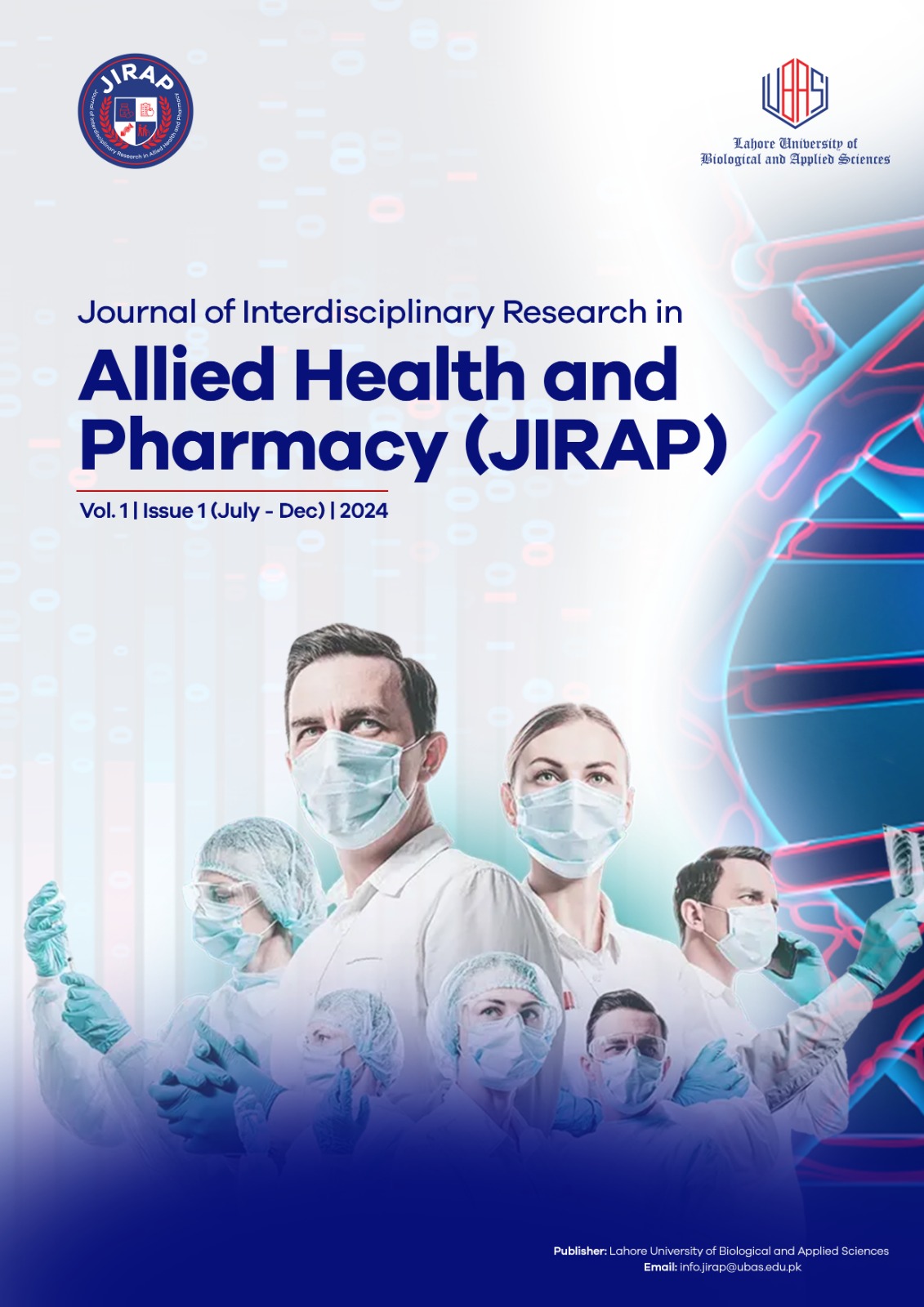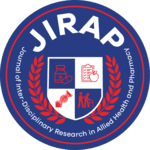In-Silico-Driven Identification of Epigallocatechin Gallate (EGCG) and Berberine as Novel Candidates to Overcome Salmonella Antibiotic Resistance via acrB and gyrB Inhibition
Abstract
Salmonellosis is a common bacterial infection caused by Salmonella species, primarily affecting the gastrointestinal tract. It is a major foodborne illness typically transmitted through contaminated water or food. Most Salmonella infections are self-limiting, and in severe cases, antibiotics become necessary. However, the problem is that Salmonella has developed resistance to multiple antibiotics due to several factors (misuse and overuse of antibiotics, horizontal gene transfer (HGT), efflux pumps, and mutation in target sites). Therefore, antibiotic resistance in Salmonella is a growing health concern, making infection harder to treat and increasing mobility and mortality rates. These drastic outcomes have led to the urgent discovery of alternative and highly targeted therapeutic drugs. Key targets, such as Efflux pump and DNA gyrase, help in overcoming Multidrug Resistance (MDR) in Salmonella, as they play a crucial role in antibiotic expulsion and bacterial DNA replication. A library of natural inhibitors was selected and assessed for their drug-likeness. Structural Validation and Refinement of both targeted proteins were conducted using ERRAT and PROCHECK, ensuring high-quality models for further interaction. The binding affinities of complex molecules and the dynamic behaviour of ligands with the active sites of acrB and gyrB over time were predicted using molecular docking and molecular dynamics simulations. Protox-3 evaluated the toxicity level of selected drugs. Strong binding affinities of EGCG and berberine with receptor proteins and their pharmacophore properties, highlighting them as novel therapeutic agents against the antibiotic-resistant strains of Salmonella.
References
1. Abramson, J., Adler, J., Dunger, J., Evans, R., Green, T., Pritzel, A., . . . Jumper, J. M. (2024). Accurate structure prediction of biomolecular interactions with AlphaFold 3. Nature, 630(8016), 493-500. doi:10.1038/s41586-024-07487-w
2. Alenazy, R. J. J. o. K. S. U.-S. (2022). Antibiotic resistance in Salmonella: Targeting multidrug resistance by understanding efflux pumps, regulators and the inhibitors. 34(7), 102275.
3. Banerjee, P., Kemmler, E., Dunkel, M., & Preissner, R. (2024). ProTox 3.0: a webserver for the prediction of toxicity of chemicals. Nucleic Acids Res, 52(W1), W513-w520. doi:10.1093/nar/gkae303
4. Cheema, H. S., Maurya, A., Kumar, S., Pandey, V. K., & Singh, R. M. J. M. C. (2024). Antibiotic potentiation through phytochemical-based efflux pump inhibitors to combat multidrug resistance bacteria. 20(6), 557-575.
5. Colclough, A. L., Alav, I., Whittle, E. E., Pugh, H. L., Darby, E. M., Legood, S. W., . . . Blair, J. M. J. F. m. (2020). RND efflux pumps in Gram-negative bacteria; regulation, structure and role in antibiotic resistance. 15(2), 143-157.
6. Colovos, C., & Yeates, T. O. (1993). Verification of protein structures: patterns of nonbonded atomic interactions. Protein Sci, 2(9), 1511-1519. doi:10.1002/pro.5560020916
7. Daina, A., Michielin, O., & Zoete, V. (2017). SwissADME: a free web tool to evaluate pharmacokinetics, drug-likeness and medicinal chemistry friendliness of small molecules. Scientific Reports, 7(1), 42717. doi:10.1038/srep42717
8. Dawan, J., Li, Y., Lu, F., He, X., & Ahn, J. J. P. (2022). Role of efflux pump-mediated antibiotic resistance in quorum sensing-regulated biofilm formation by Salmonella Typhimurium. 11(2), 147.
9. Ebbensgaard, A. E., Løbner-Olesen, A., & Frimodt-Møller, J. J. A. (2020). The role of efflux pumps in the transition from low-level to clinical antibiotic resistance. 9(12), 855.
10. Gupta, D., Sachdeva, E., Salman, M., & Kaur, P. (2025). Topoisomerases as targets for halting bacterial DNA replication. In Bacterial Enzymes as Targets for Drug Discovery (pp. 187-214): Elsevier.
11. Johnson, R., Mylona, E., & Frankel, G. J. C. m. (2018). Typhoidal Salmonella: Distinctive virulence factors and pathogenesis. 20(9), e12939.
12. Khan, M., & Shamim, S. J. M. (2022). Understanding the mechanism of antimicrobial resistance and pathogenesis of salmonella enterica serovar typhi. 10(10), 2006.
13. Khan, M. A. S., & Rahman, S. R. J. V. S. (2022). Use of phages to treat antimicrobial-resistant Salmonella infections in poultry. 9(8), 438.
14. Kurcinski, M., Oleniecki, T., Ciemny, M. P., Kuriata, A., Kolinski, A., & Kmiecik, S. (2019). CABS-flex standalone: a simulation environment for fast modeling of protein flexibility. Bioinformatics, 35(4), 694-695. doi:10.1093/bioinformatics/bty685
15. Liu, Y., Yang, X., Gan, J., Chen, S., Xiao, Z.-X., & Cao, Y. (2022). CB-Dock2: improved protein–ligand blind docking by integrating cavity detection, docking and homologous template fitting. Nucleic Acids Research, 50(W1), W159-W164. doi:10.1093/nar/gkac394 %J Nucleic Acids Research
16. López-Blanco, J. R., Aliaga, J. I., Quintana-Ortí, E. S., & Chacón, P. (2014). iMODS: internal coordinates normal mode analysis server. Nucleic Acids Res, 42(Web Server issue), W271-276. doi:10.1093/nar/gku339
17. Marchello, C. S., Birkhold, M., Crump, J. A., Martin, L. B., Ansah, M. O., Breghi, G., . . . Kim, J.-H. J. T. L. I. D. (2022). Complications and mortality of non-typhoidal salmonella invasive disease: a global systematic review and meta-analysis. 22(5), 692-705.
18. Naushad, S., Ogunremi, D., Huang, H. J. S.-P. f. L.-C. P., Control, & Treatment. (2023). Salmonella: a brief review.
19. Pozdeev, G., Mogre, A., & Dorman, C. J. (2021). Consequences of producing DNA gyrase from a synthetic gyrBA operon in Salmonella enterica serovar Typhimurium. 115(6), 1410-1429. doi:https://doi.org/10.1111/mmi.14689
20. Punchihewage-Don, A. J., Ranaweera, P. N., & Parveen, S. J. F. i. A. (2024). Defense mechanisms of Salmonella against antibiotics: a review. 3, 1448796.
21. Salman, M., Sharma, P., Kumar, M., Ethayathulla, A., & Kaur, P. J. B. i. F. G. (2023). Targeting novel sites in DNA gyrase for development of anti-microbials. 22(2), 180-194.
22. Talukder, H., Roky, S. A., Debnath, K., Sharma, B., Ahmed, J., Roy, S. J. J. o. e., & health, g. (2023). Prevalence and antimicrobial resistance profile of Salmonella isolated from human, animal and environment samples in South Asia: a 10-year meta-analysis. 13(4), 637-652.
23. Thakur, V., Uniyal, A., & Tiwari, V. J. E. J. o. P. (2021). A comprehensive review on pharmacology of efflux pumps and their inhibitors in antibiotic resistance. 903, 174151.
24. Wang-Kan, X., Blair, J. M. A., Chirullo, B., Betts, J., Ragione, R. M. L., Ivens, A., . . . Piddock, L. J. V. (2017). Lack of AcrB Efflux Function Confers Loss of Virulence on Salmonella enterica Serovar Typhimurium. 8(4), 10.1128/mbio.00968-00917. doi:doi:10.1128/mbio.00968-17

Downloads
Published
License
Copyright (c) 2024 Journal of Interdisciplinary Research in Allied Health and Pharmacy

This work is licensed under a Creative Commons Attribution 4.0 International License.
cc BY






